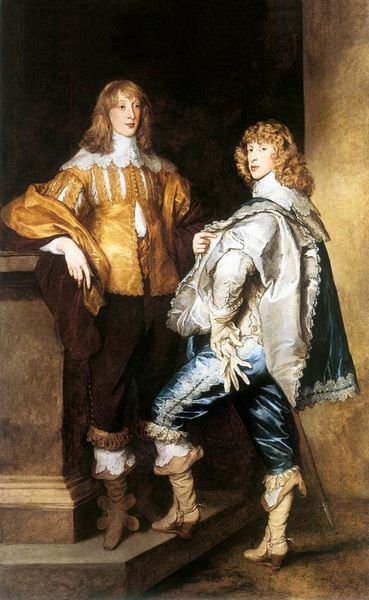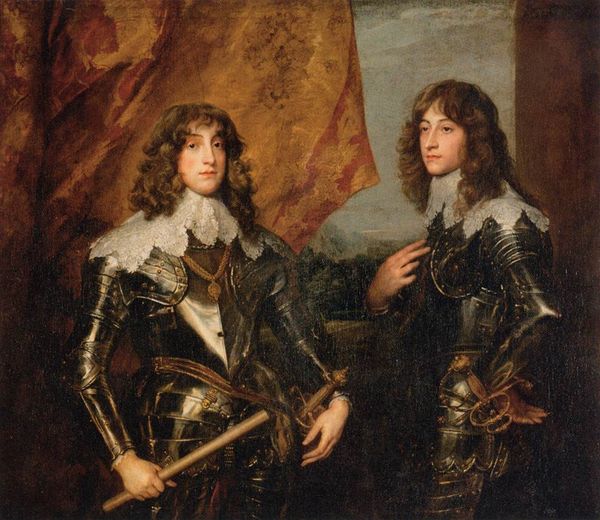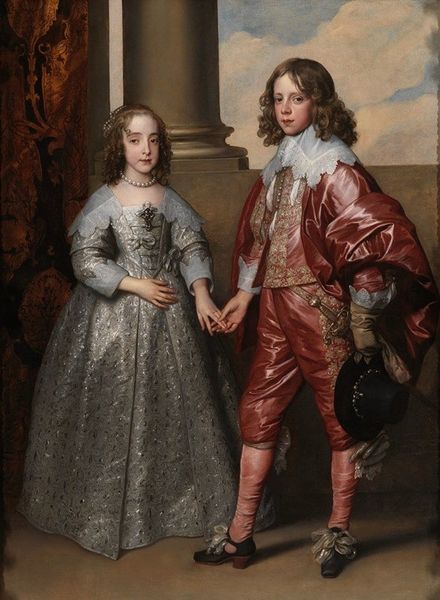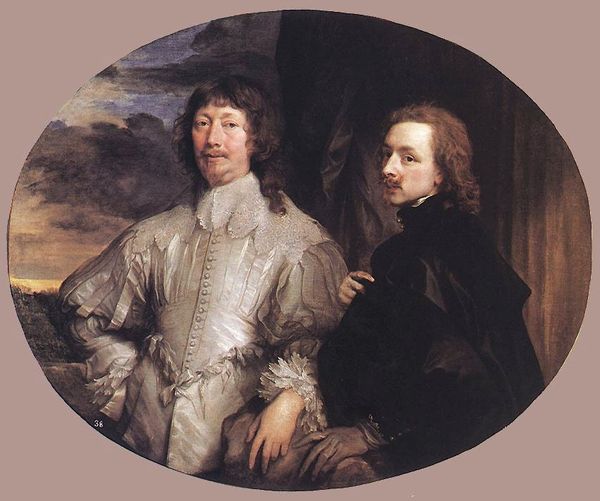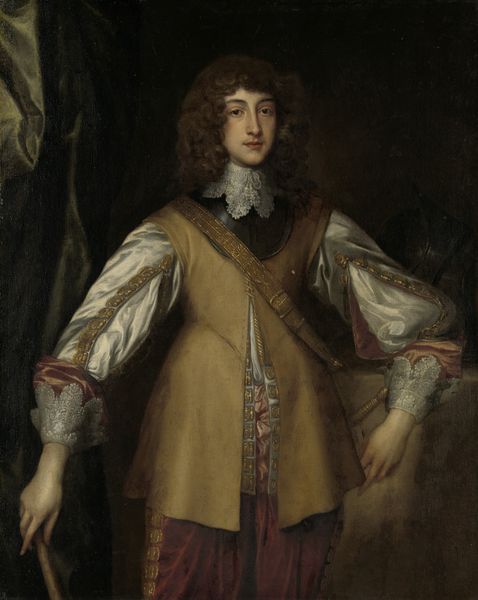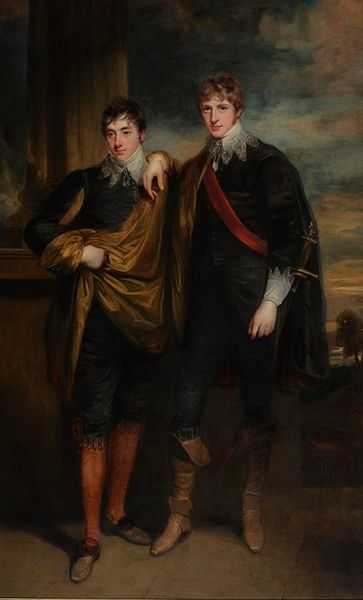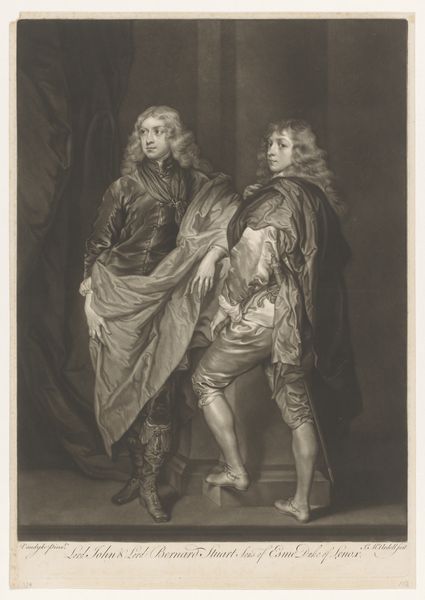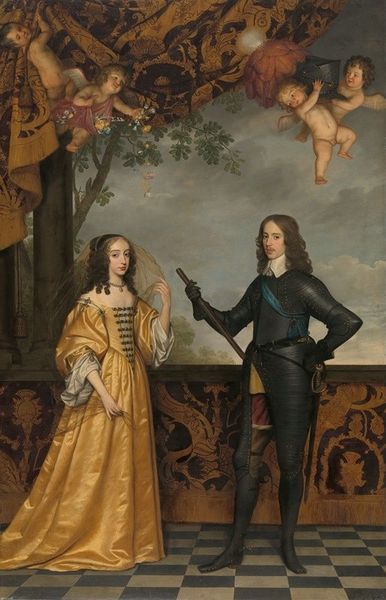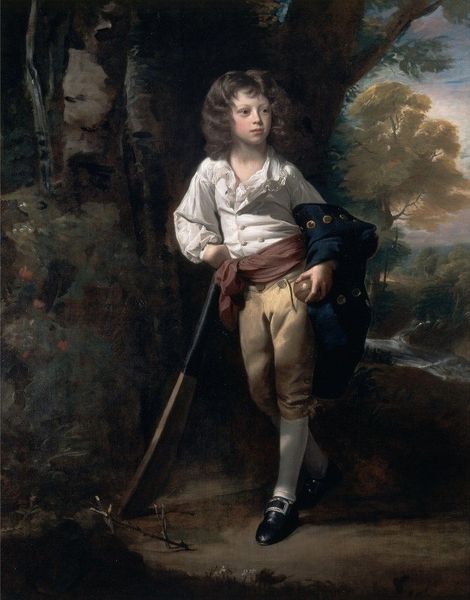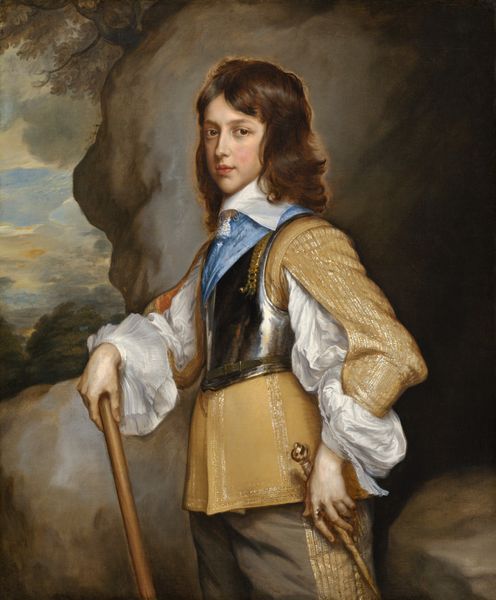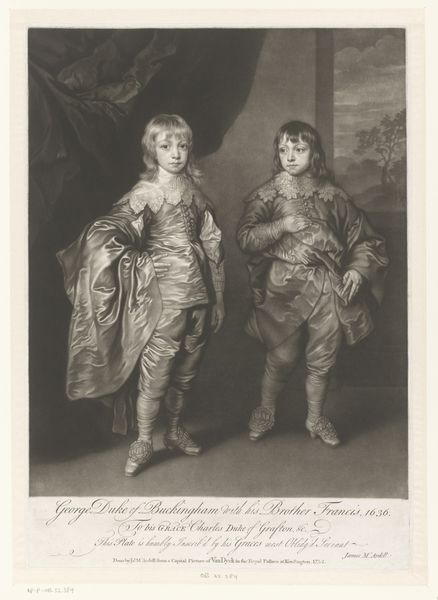
painting, oil-paint
#
portrait
#
figurative
#
painting
#
oil-paint
#
figuration
#
history-painting
#
portrait art
#
rococo
Copyright: Public Domain: Artvee
Editor: This is Thomas Gainsborough's "Lords John and Bernard Stuart," painted around 1760-1770, using oil on canvas. The brothers strike rather affected poses. I’m curious – what narratives do you find present in this double portrait beyond its elegant surface? Curator: I see a very intentional performance of masculinity tied to aristocratic power in a changing social landscape. The Stuart brothers' elaborate costumes and relaxed postures are markers of privilege, yes, but they are also performing an ideal. Consider the context. The painting dates to a time of significant political upheaval and shifting class structures. Editor: An ideal, you say? Can you elaborate? Curator: Well, yes. Are they presented as powerful military figures? No. Instead, they embody a softer, more refined aristocratic ideal – one that perhaps masks the brutal realities upon which their privilege was built. We need to consider how power operates in these supposedly "gentle" images. Also note, were the brothers not staunch Royalists who ultimately lost their lives fighting for the monarchy? Editor: That is an interesting point. It suggests the portrait wasn’t just about aesthetic beauty but also served as a complex assertion of their political affiliations and social standing. Curator: Exactly. It reflects how identity, particularly within the aristocracy, was meticulously constructed and performed, as much for themselves as for public consumption, in a society grappling with evolving power dynamics. Perhaps we might view this portrait less as a depiction of simple elegance, but rather an argument in visual form for a very specific kind of identity. Editor: That provides a great point to consider. Thank you.
Comments
No comments
Be the first to comment and join the conversation on the ultimate creative platform.
